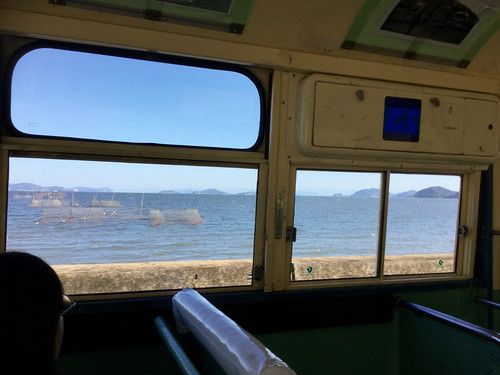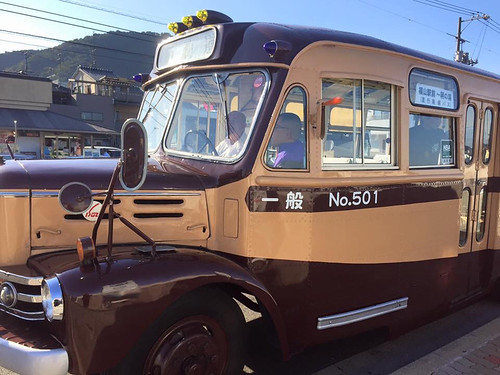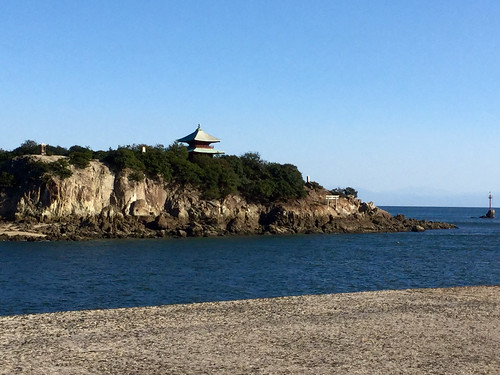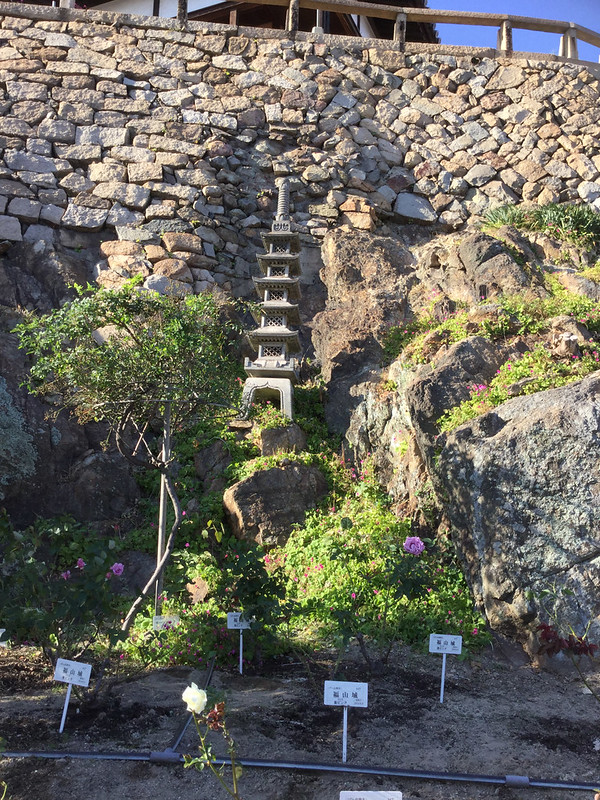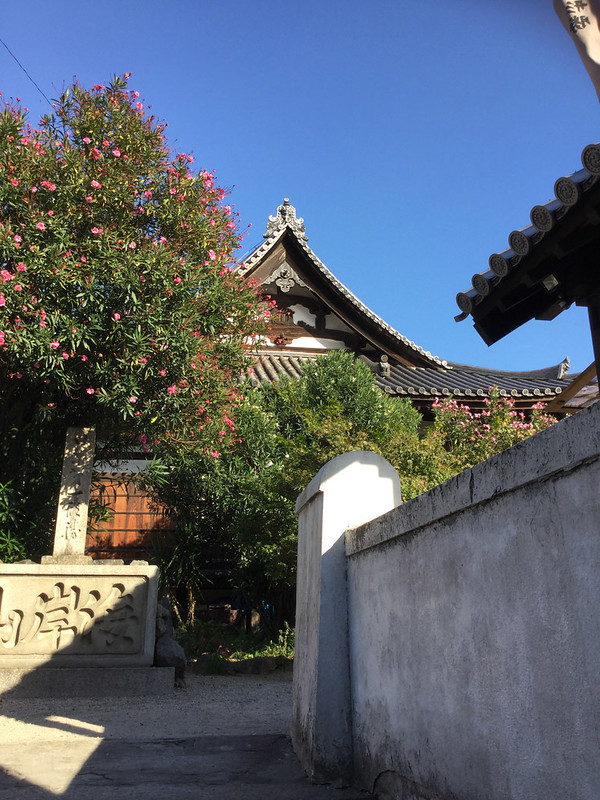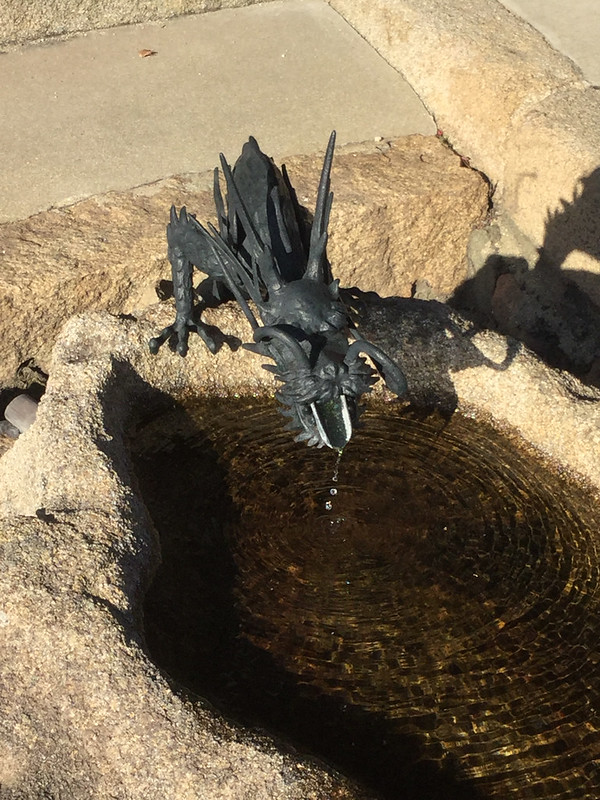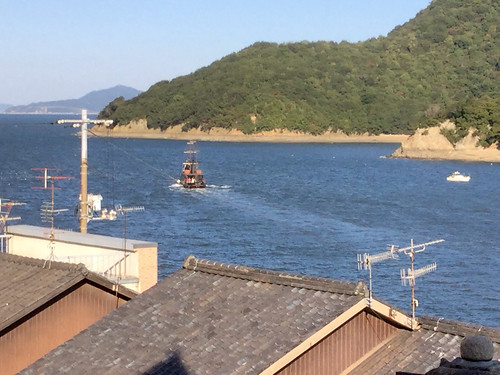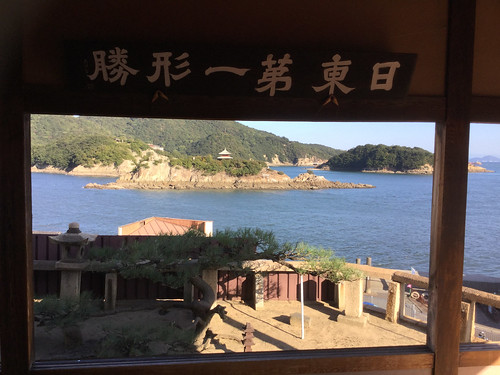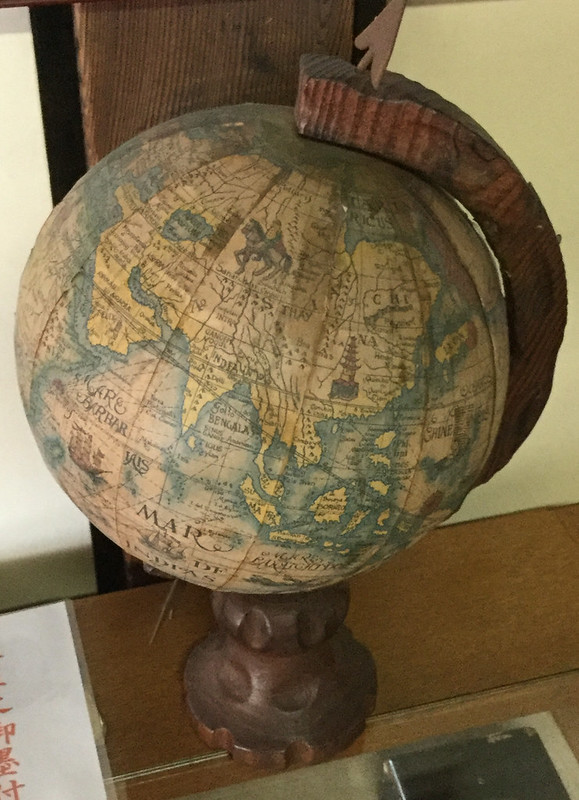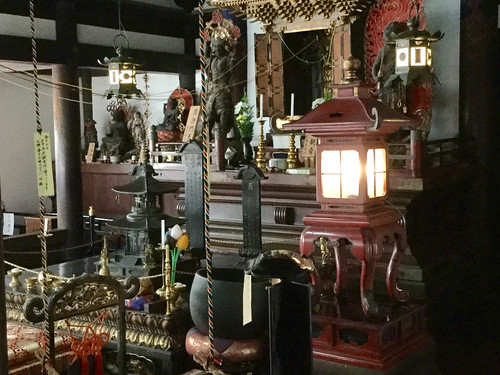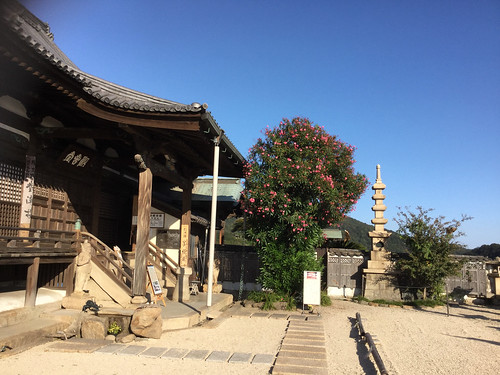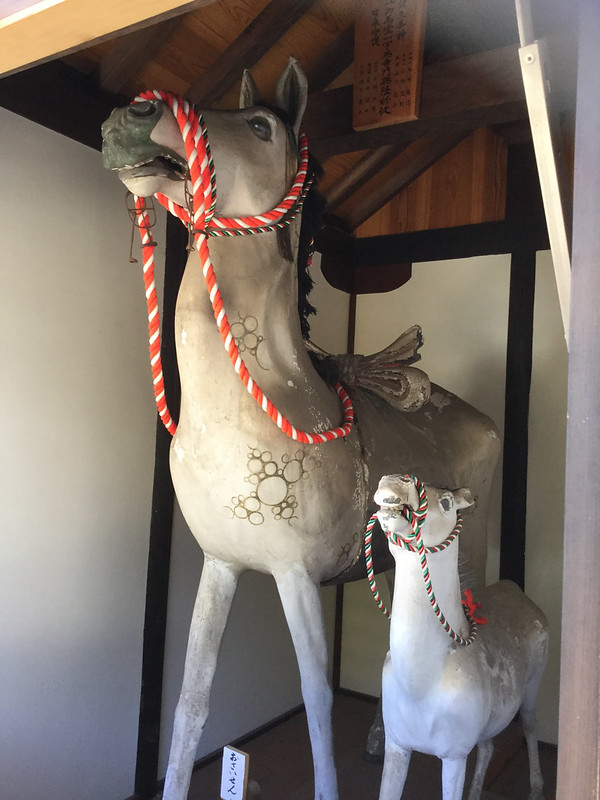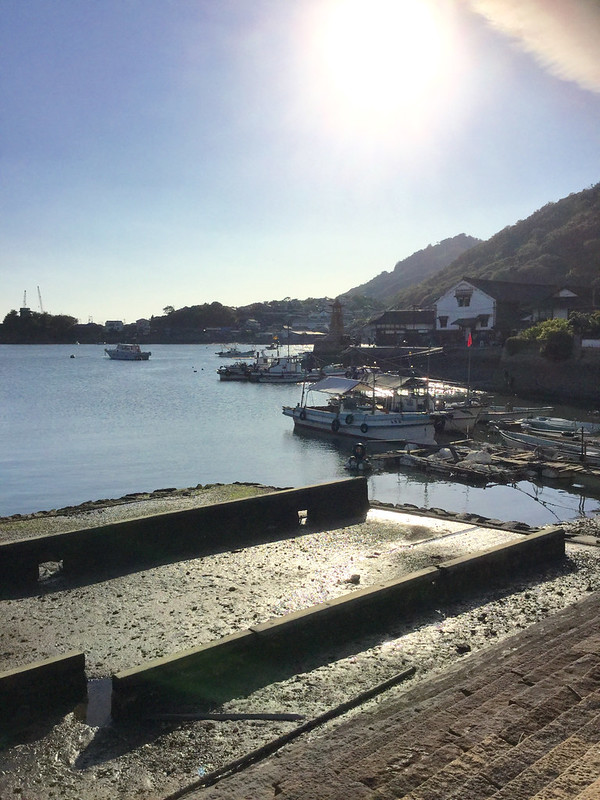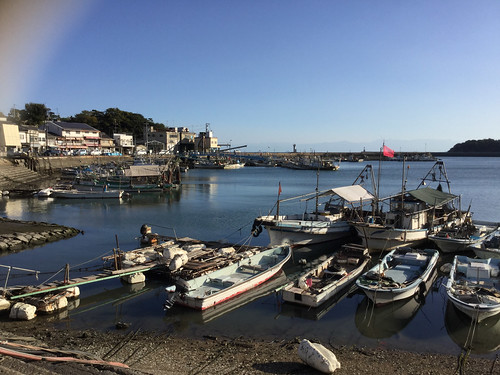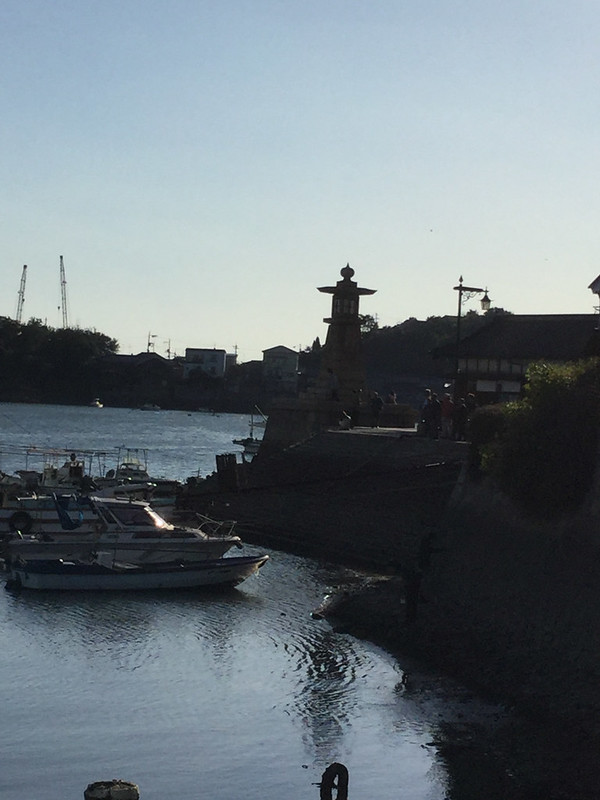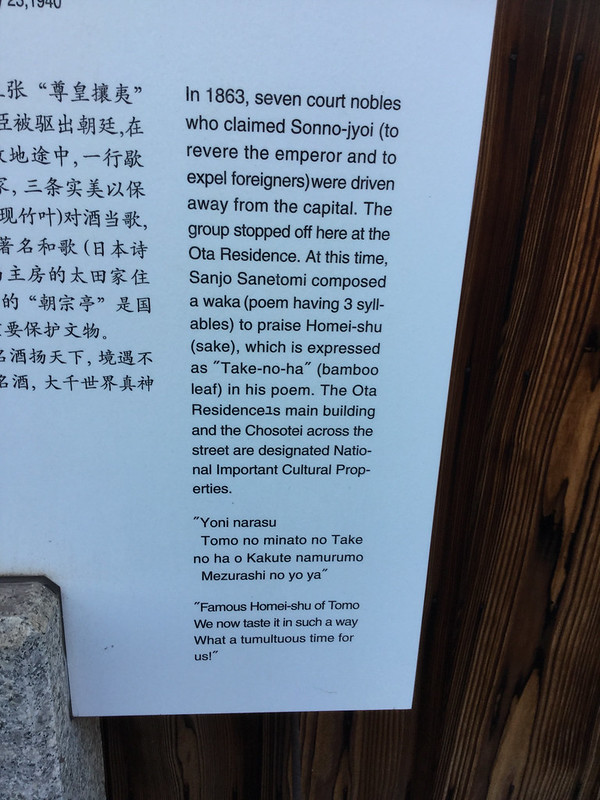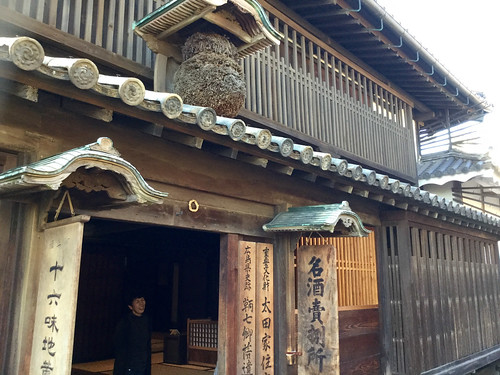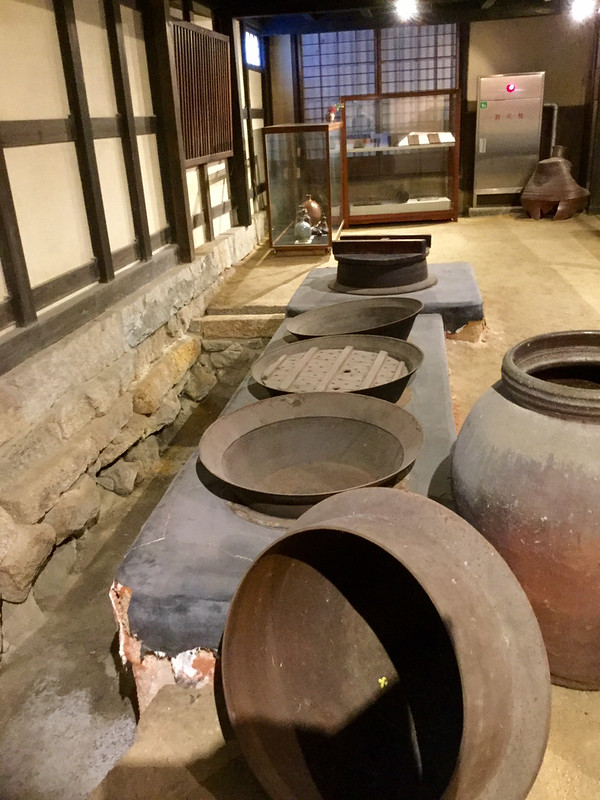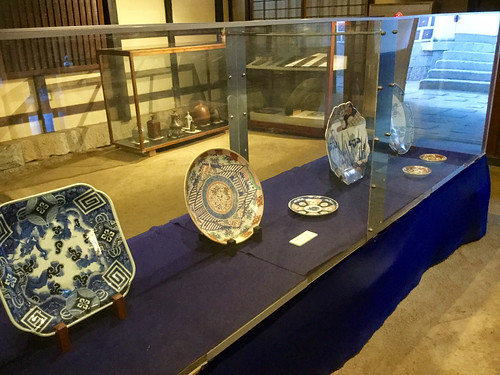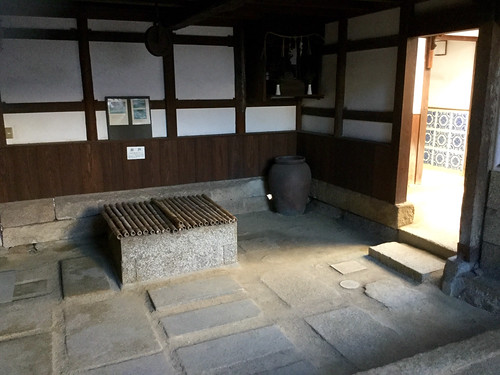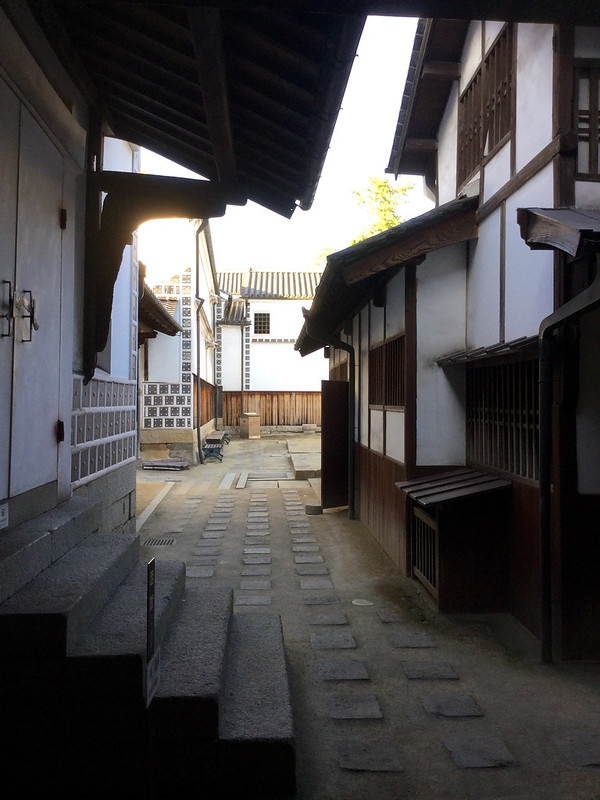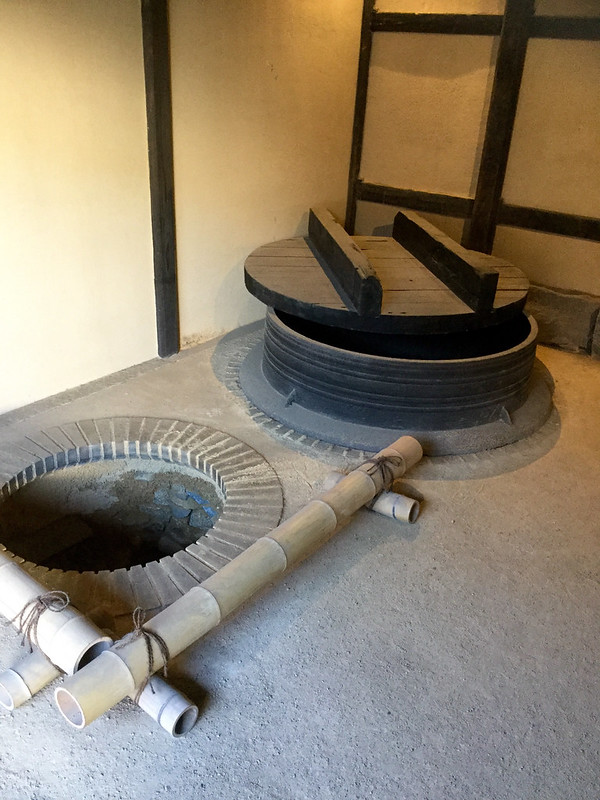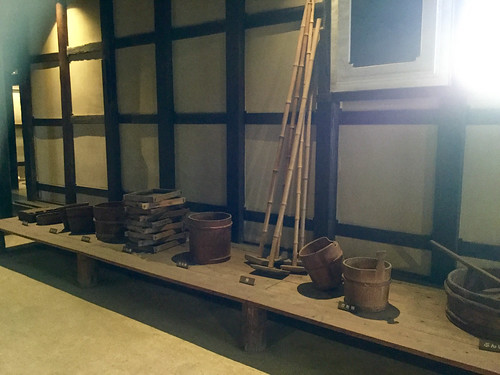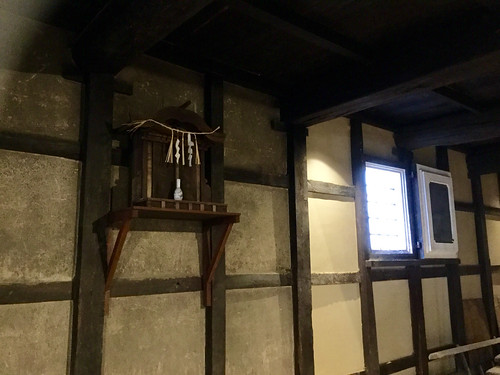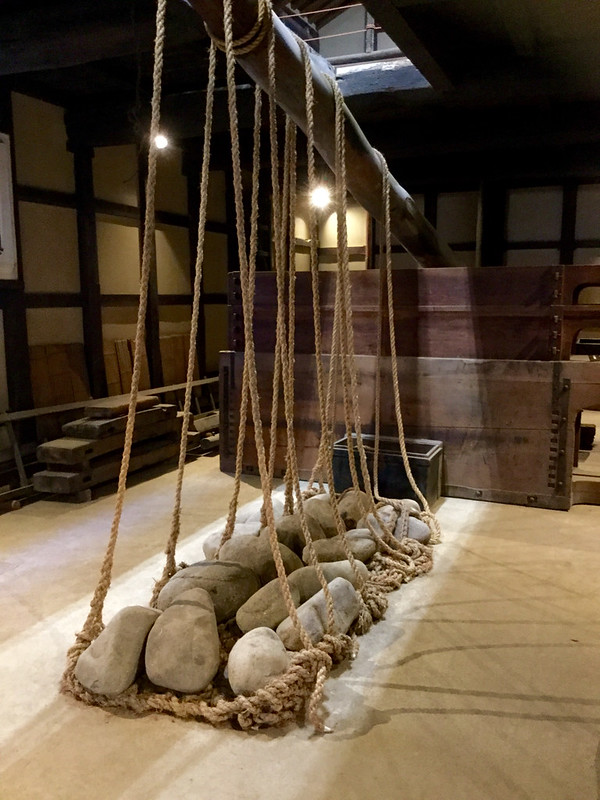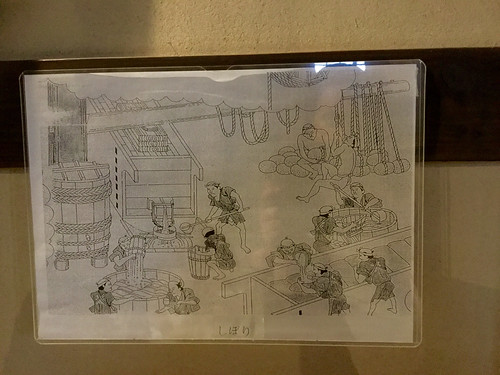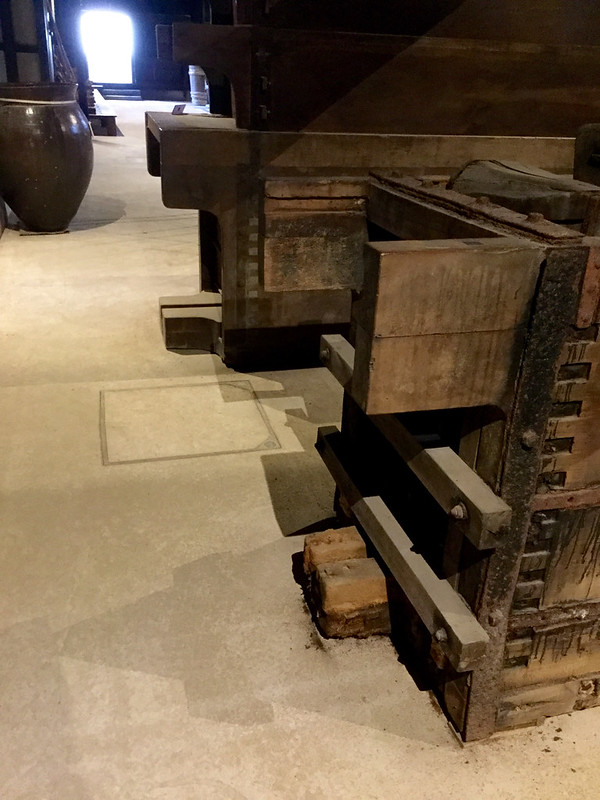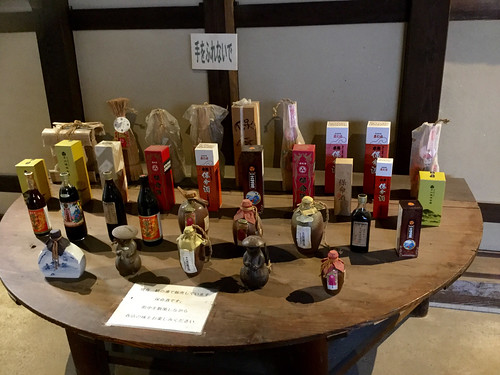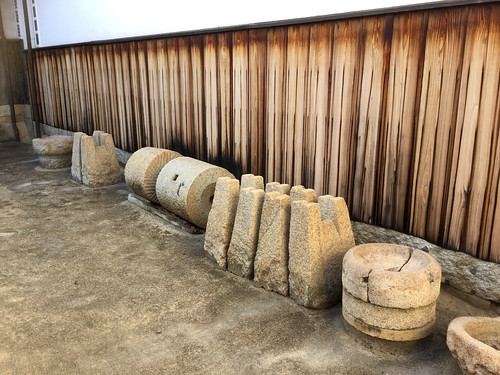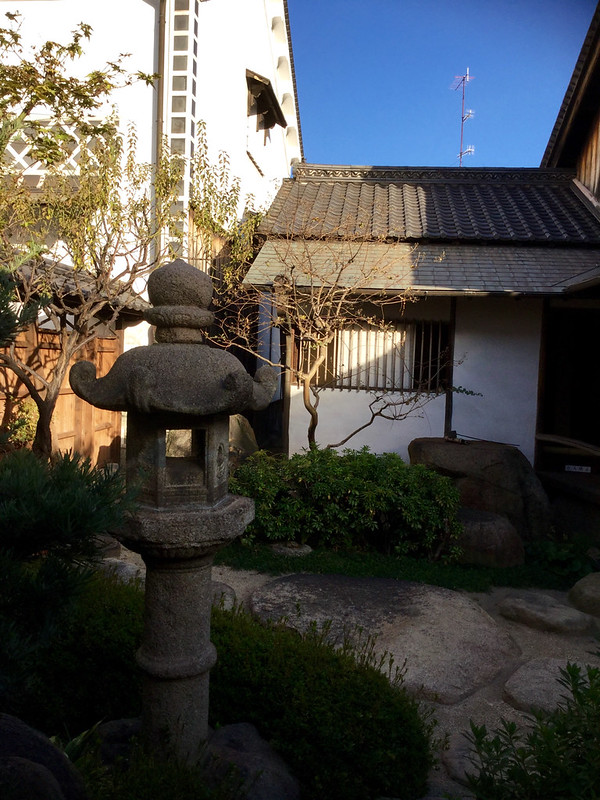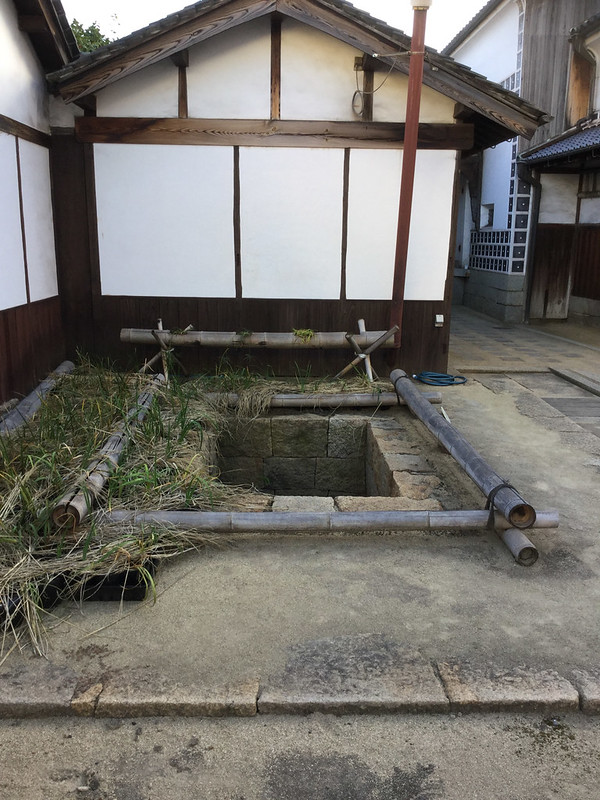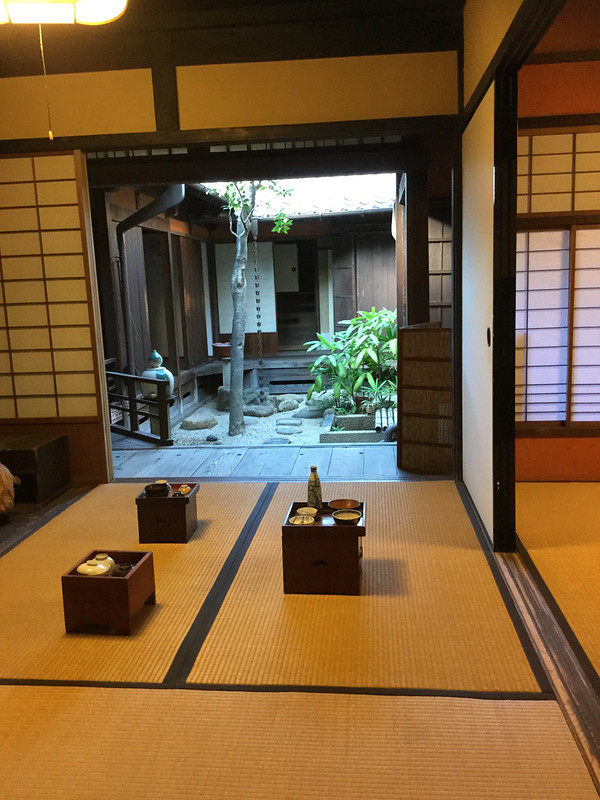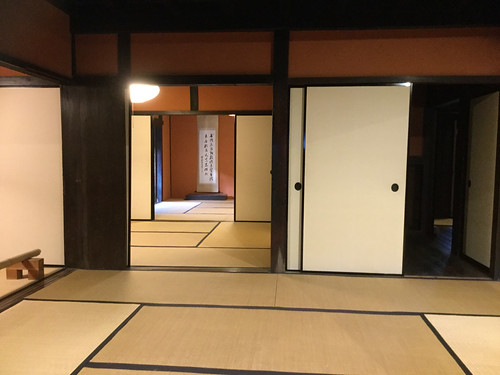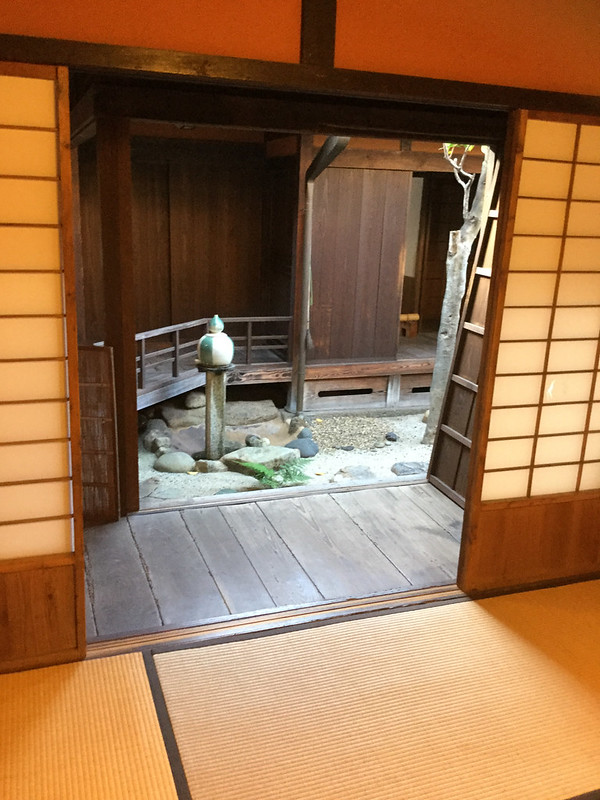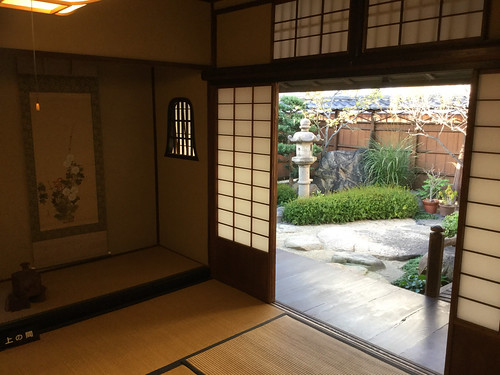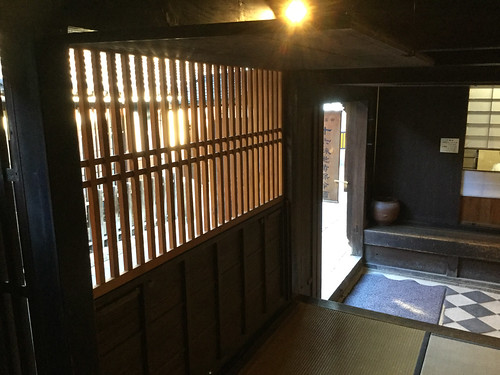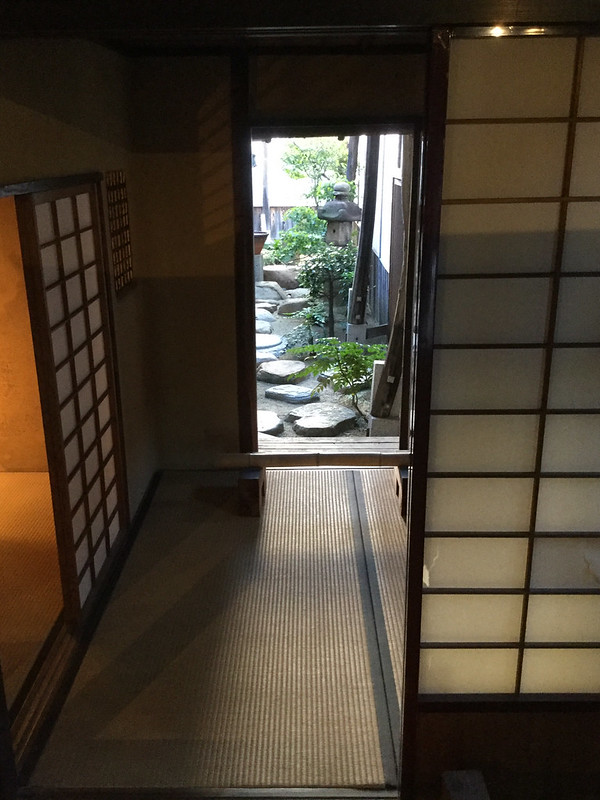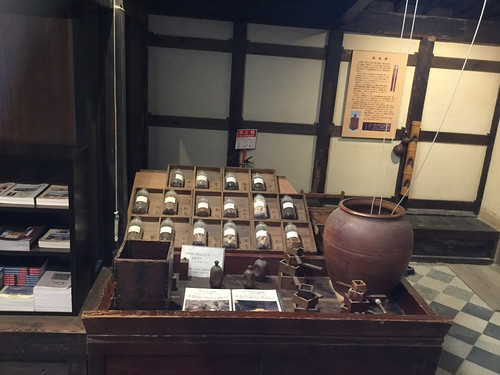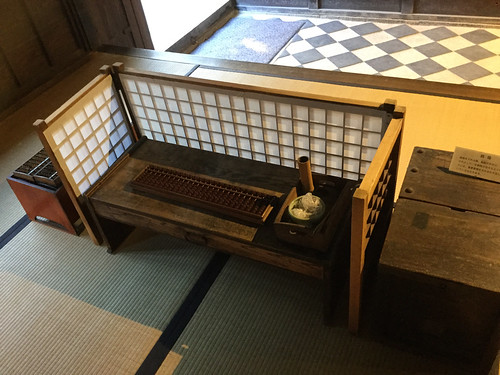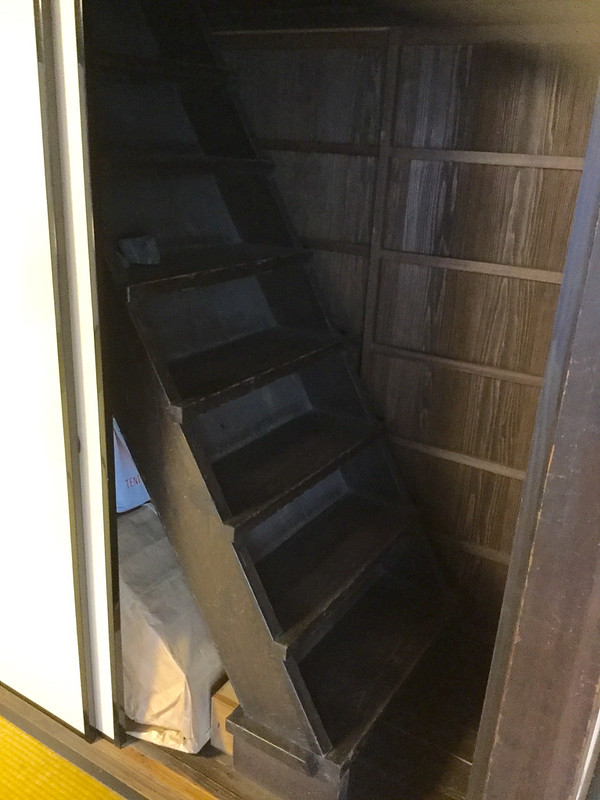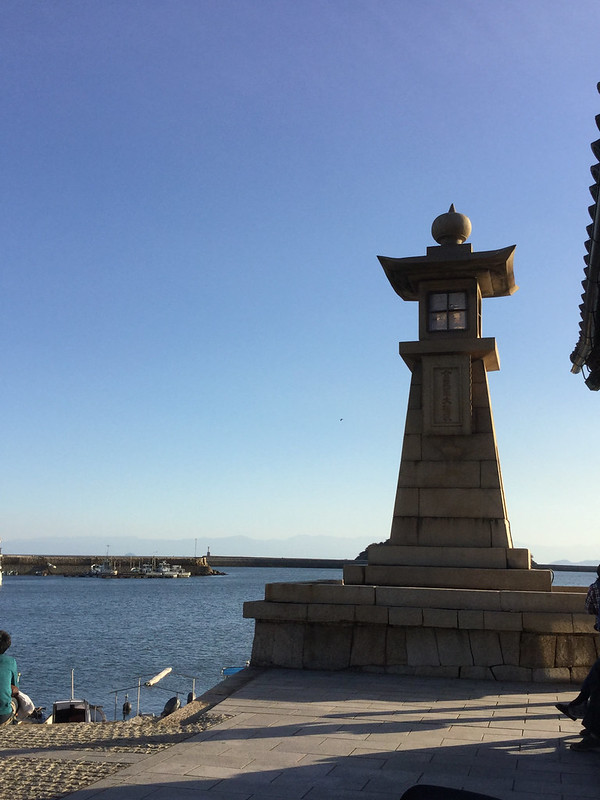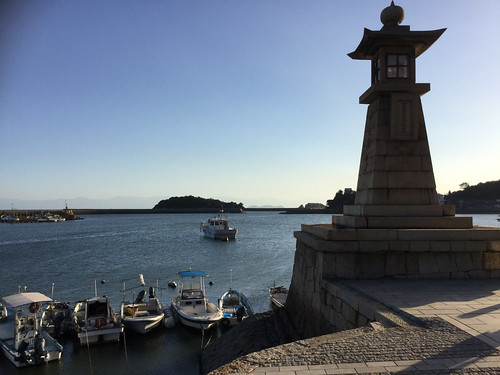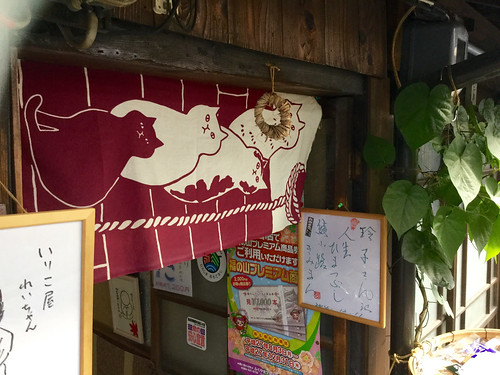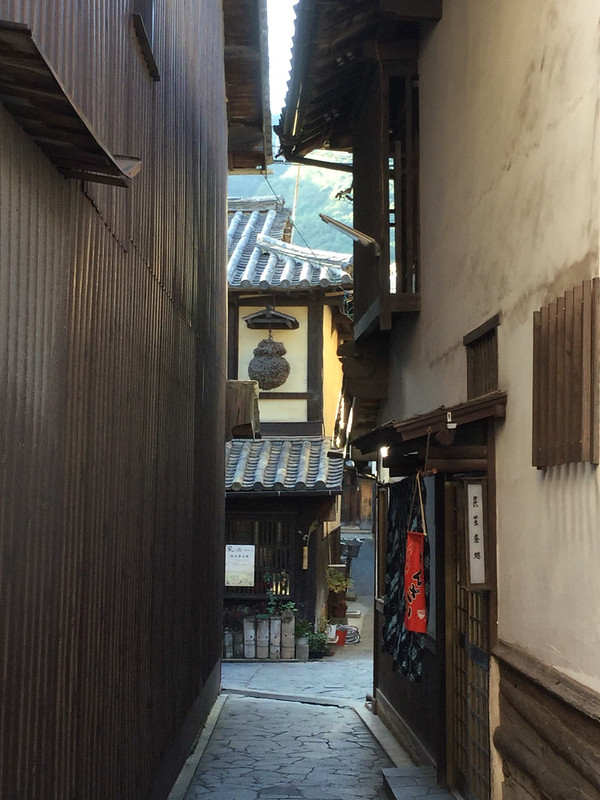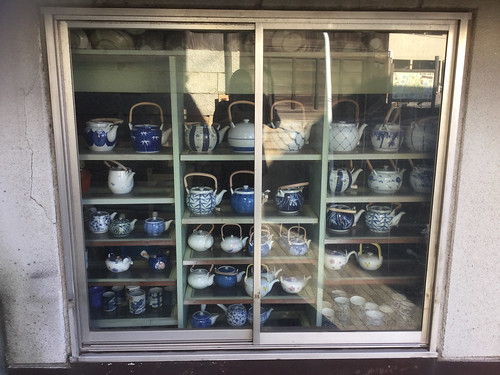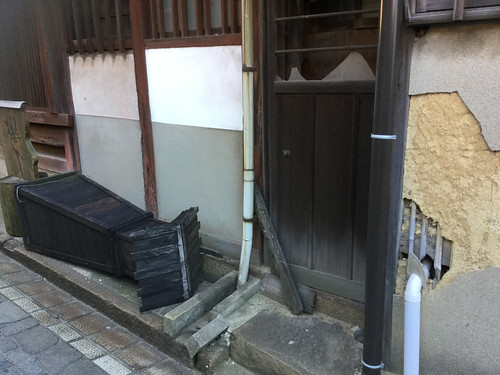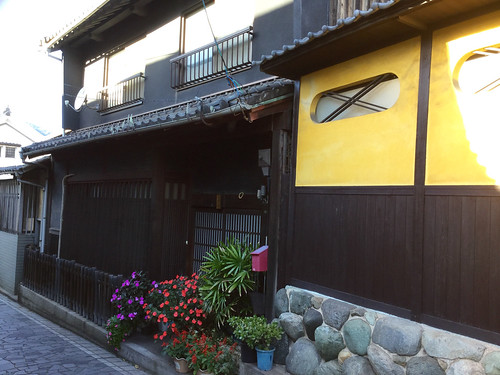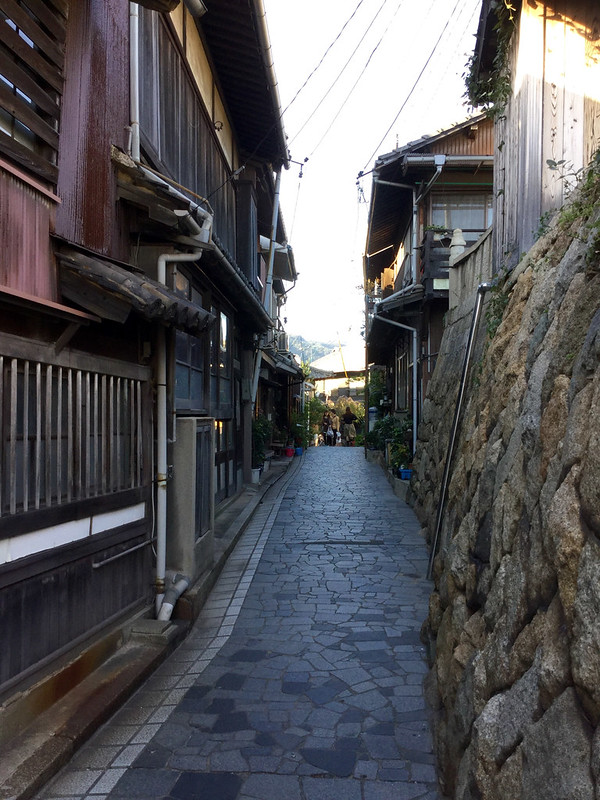Nach dem Museum ist noch viel Nachmittag übrig, aber, alle Sehenswürdigkeiten sind schon gesehen. Auf dem Faltblatt, welches mir an der Touristen-Information ausgehändigt wurde, ist ein Ausflug nach Tomonoura empfohlen. Als ich an der Bushaltestelle ankomme, fährt ein Oldtimer vor, ein Bus aus den 50er Jahren, und ja, er fährt nach Tomo. Das finde ich gut, dafür gibt's ein 'Like'. Im Bus erklärt die Reiseleiterin das Fahrzeug und etliche Sehenswürdigkeiten, die wir passieren. Alles auf japanisch, darum verstehe ich nicht wirklich etwas. Aber sie hat sich viel Mühe gemacht und alles mit Zeichnungen illustriert.
Tomonoura ist ein Hafen auf einer Halbinsel ca 40 Kilometer von Fukuyama entfernt. Sehr malerisch. Es gibt eine voll funktionsfähige Hafenanlage aus der Edo-Zeit, Stufen, die ins Wasser führen, um Schiffe bei Ebbe und Flut beladen zu können, eine Mole und ein Leuchtturm, wunderschöne Ausblicke auf kleine Inseln in der Bucht, zahlreiche Tempel und Schreine und ein Sakemuseum.
Von der Terrasse des Fukuzenji Tempel aus gibt es einen fabelhaften Ausblick auf das Meer und die unbewohnte Insel Bentenjima, der Schutzgottheit der Fischer gewidmet, auf deren höchster Erhebung man ein kleines Tori sieht. Und da mir vieles im Leben zweimal begegnet, finde ich auch hier wieder einen Globus. Tomonoura war Durchgangsstation für Händler aus Korea und von der niederländischen Oost India Compagnie auf dem Weg in die Hauptstadt. Möglicherweise war dieser kleine Hafenflecken weltoffener als größere Städte im Umland. Eine sehr nette Dame bittet mich zu warten, damit sie mir ein englisches Faltblatt über den Tempel bringen kann.
Nun besuche ich die Ōta Residenz, ein sehr großes Wohnhaus mit Sakebrennerei. Ich habe schon einmal eine alte Brennerei besucht, im Museumsdorf in Sapporo, dort wurde grüner Tee ausgeschenkt (http://fraumb-far-far-away.blogspot.jp/2014/04/ganz-hokkaido-in-drei-stunden-whole.html).Hier werde ich erstmal gefragt, ob ich japanisch spreche, nein, domo sumimasen, leider nicht. Darauf hin wird die Dame am Einlass ganz aufgeregt und sucht in verschiedenen Papiertüten. Ah, hier, gefunden. Ich denke mir so, ach, bekomme ich noch ein Faltblatt, finde ich gut. Aber nein, ich bekomme eine persönliche Führung, auf englisch, mit Hilfe mehrer A4Blätter, auf denen die wichtigsten Dinge in kurzen englischen Sätzen zusammen gefasst sind und die die charmante Führerin mir vorliest. Kann sie ein Wort nicht aussprechen, lässt sie mich lesen. Eine sehr originelle Idee.
Ich lerne, dass Sake eigentlich eher eine Medizin ist. Sind schließlich viele Kräuter drin. Sehe die großen Kochstellen, wo der Reis gekocht und die großen Bottiche, wo er abkühlte und die großen Krüge, wo fermentierte. Eine Steinpresse, um den Sake aus der Maische zu pressen und das fertige Ergebnis in Form unzähliger Flaschen. Die Häuser sind mit Fliesen verkleidet, und der weiße Bubble in der Mitte bedeckt den Nagel. Ist bestimmt praktisch, so direkt am Meer. Es gibt Seilzüge, mit denen die höher gelegenen Fenster auf und zu geschoben wurden und dann das Wohnhaus, mit Wohnzimmern, Badezimmer und kleinem Garten im Hof, den Verkaufsraum und den Platz des Zahlmeisters, anschaulich dekoriert mit alten Abakussen und es gibt eine geheime Treppe unters Dach, verborgen in einem Wandschrank. Hat man sein Versteck sicher erreicht, konnte die Treppe eingezogen werden und sah von unten aus wie die Decke des Schranks. Eine Versicherung gegen Räuber oder marodierende Samurai.
Nun sind es nur noch wenige Schritte bis zum Ende der Mole, wo der Leuchtturm steht, der eigentlich eine gigantische Steinlaterne ist, die größte, die ich jemals gesehen habe. Hier ist die Welt zu Ende, darauf erst mal einen schmackhaften Kaffee und dann wandere ich zurück, durch kleine Gassen mit alten Häusern bis zum Bus, der mich in die große Stadt zurück bringt.
I'm done with the museum, but there is still some afternoon left, only the points of interest are all sawn. At the tourist information I got a flyer, which highly recommended a visit in Tomonoura. When I get to the bus stop, a vintage bus comes along, one from the 50s and yes, it's going to Tomo. Therefore I give a 'like'. On bus the guide lady explains everything about the vehicle and the sights we see outside. It's all in Japanese, so I didn't understand properly, but she did a great job with drawing pictures for anything.
Tomonoura is a port about 40 kilometres away from Fukuyama. Very picturesque. There is a complete preserved port from the Edo Period, with steps leading into the water, so boats could be loaded at any time, flood or low tide, a pier and a light house. You find fantastic views onto small islands in the bay, many temples, shrines and a sake museum.
From the terrace of Fukuzenji temple you get a fabulous view to the sea and Bentenjima, an uninhabited island, dedicated to Benten, the tutelary deity of fishermen, on their highes point is a small tori to be seen. And because many things I see two times in a row, I find a second globe here. Tomonoura was a passing point for merchants from Korea and the Dutch Oost India Compagnie on their way to the capital. So maybe that small fishermen place was more cosmopolitan than the bigger cities around. A lovely lady asks me to wait a second, so she can hand me an English flyer of the temple.
Now I go for the Ōta Residence, a huge living house with sake brewery. I've been before in a brewery, in the museum village in Sapporo, there they served green tea (http://fraumb-far-far-away.blogspot.jp/2014/04/ganz-hokkaido-in-drei-stunden-whole.html). Here I was asked first, if I speak Japanese. No, domo sumimasen, very sorry. Because of that the lady at the entry gets excited and is rummaging in some paper bags, yes, here it is and I think, ah, cool, I'll get another English flyer. Nope, I get an English tour. She will show me around and explain everything by reading it from her paper. The basics are summed up in simple English sentences and if she can't pronounce a word, I read it. Joint venture, very clever idea.
I learn, sake is a kind of medicine. Because there are so many herbs in. I see the big fire paces where the rice was cooked, the big vats where is was cooled down and the huge pots where it was fermented, the stone press to press the sake out of the mash, and of course the results in the form of many bottles. The houses are covered with tiles and the white bubble in the middle is covering a nail, that makes sense, so near the sea. There are ropes to pull to pull to open up the higher windows, there is the house with living rooms, an inner garden, the shoppe, and the place of the paymaster, easy to spot because of the old abacuses and there is a secret stairway to the attic, hidden in a closet. When you reach the room in the attic, you pull the ladder and it looked like a part of the ceiling of the closet. An insurance against brigands and marauding samurai.
Now only a few steps to the end of the jetty, where the light house is, what is in fact a enormous stone lantern, the biggest one I ever saw. That's the end of the world and time for a tasty coffe and than I'm wandering back through small streets with old houses to the bus back to town.
